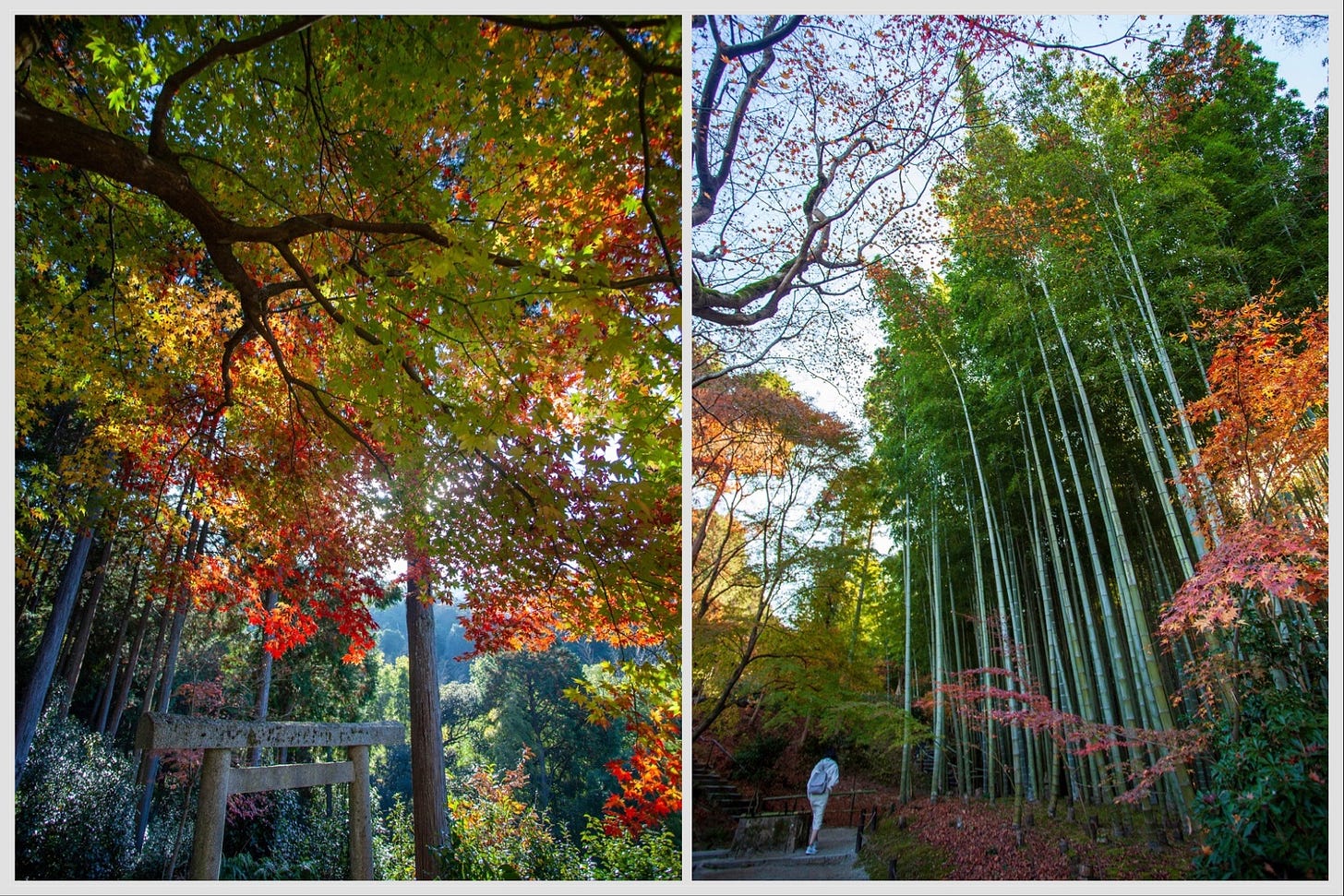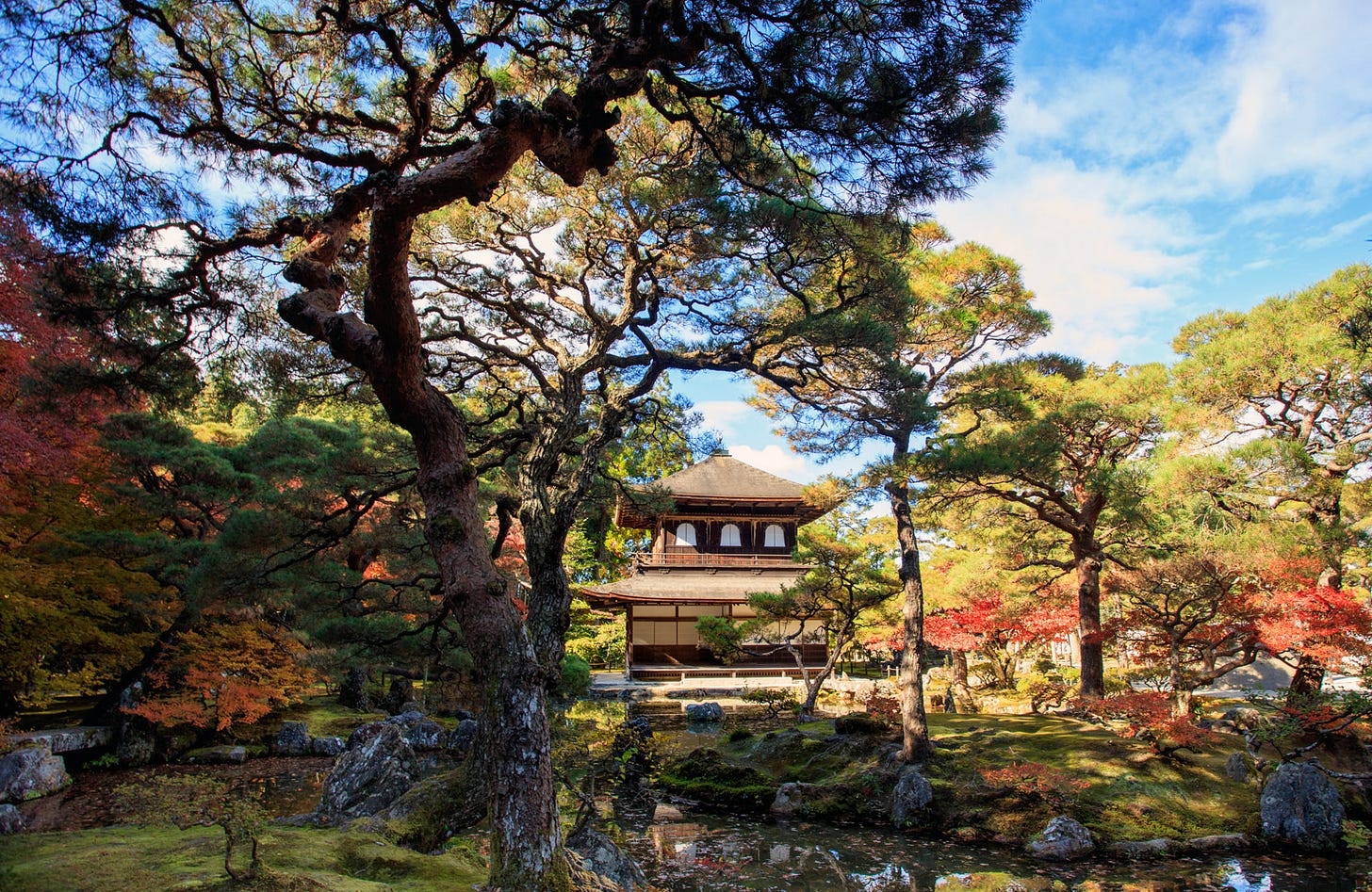One Fine Autumn Day in Kyoto
Travel diaries: a diary of a day in Kyoto during my annual early-December fall foliage outings.
Every year, on the first weekend of December, I make my annual fall foliage trip to Kyoto. It's a two-day, three-night visit, starting with the 6:30 p.m. Shinkansen from Tokyo right after work on a Friday evening. I return on one of the earliest trains back to Tokyo on Monday morning and go straight to the office. While staying the extra nights adds to the cost, I enjoy waking up in Kyoto with the stress of travel behind me and having two full days to explore the city.
Since I am a creature of habit and find great comfort in having a routine, I usually follow the same daily itinerary. So, I thought it might be a good idea to introduce my favorite fall color viewing spots in Kyoto in a diary-style post. Here we go - let`s get up at 5 a.m.1
5 a.m. - early morning at the Hotel Anteroom
Whenever I am in Kyoto, I usually stay at Hotel Anteroom, a 10-minute walk from the main train station in the southern part of the city. They offer affordable single rooms, which are, though small, stylishly decorated and very well equipped (including a desk space).
I am an early riser—the 4 a.m. type—but the sun does not rise until 7 a.m. in Kyoto in December. So, having a desk space in my own room to do some work, blog, or waste time on my laptop is a big plus for me.
There is a rich breakfast buffet at Anteroom starting at 7 a.m., which costs 1,500 Japanese Yen per person (highly recommended), but I usually avoid the hotel breakfast in the morning to start my day out in the city as early as the sun rises (and pick up a sandwich and coffee from one of the tenths of Starbucks in the city).
My first stop of the day is a little far. Since it would take me 2.5 hours on foot, I divide the trip into two legs (as I love starting the day with a fast walk): walking to Sanjo Keihan Station (which takes an hour) and then taking the city bus #5. This is the only trip of the day that partially requires public transportation. Every other place can be explored on foot—Kyoto is not a very big city.
8 a.m. - starting the foliage viewing at Enkou-ji Zen Temple
My first stop is always the Enkou-ji Temple, which is in the northern part of the city but a little outside the temple-dense area of Higashiyama. The main hall opens up to a beautiful garden—Jyu-Gyu no Niwa—allowing one to feel not only like an observer but also part of one of the most spectacular foliage scenes in Kyoto.
There is also a very short bamboo tree section that leads to a shrine overlooking the temple grounds. This is where the teeth of Tokugawa Ieyasu are interred (upon his wishes)-not a minor feat that significantly elevates the profile of this beautiful temple. Tokugawa Ieyasu is the founder of the Tokugawa shogunate, which ruled Japan for more than two centuries during the Edo Period. I usually spend more than an hour at this shrine as I find the lighting washing over the tori gate leading to the shrine mesmerizing.
During the fall colors season, entrance to the temple is subject to advance reservation and a higher fee (1000 Yen during the foliage season - 600 Yen during the regular season). But do not let this discourage you; I never had difficulty booking a ticket. When the season approaches, you can book your ticket on Enkouji Temple`s official website. Due to my advanced case of fall colors-specific FOMO, I always book the first slot, which starts at 8 a.m.
10 a.m. - Silver Pavilion and its picturesque pond
By the time I am done adoring the light over the colorful leaves at Enkouji Temple, it is usually already around 9.30-10 a.m. Kyoto gets colder than Tokyo in December, and my feet are usually already freezing by that point since I insist on walking around in sneakers, and temple halls are notoriously cold in Japan. But that does not stop me from walking down to the Ginkakuji, which is 30 minutes south of Enkouji Temple and otherwise known as the Silver Pavilion.
The Silver Pavilion, modeled after the much more flashy Golden Pavilion, is a retirement village of the shogun Ashikaga Yoshimasa, the eighth shogun during the Muromachi Period. It is surrounded by a moss garden and a sand garden, and you can hike up to the narrow walking path along the skirts of Higashiyama Mountain and enjoy the painting-like scenery from above.
Considered the pinnacle of Zen-inspired wabi-sabi architecture, the Silver Pavilion is a better choice than the Golden Pavilion (which is, of course, gorgeous) if you have to pick one during the fall colors season.
11 a.m. - walking along the Philosopher`s Path and a coffee break
My next stop is usually the Philosopher`s Path—哲学の道, Tetsugaku no michi. Even though this is one of the most popular sightseeing spots in Kyoto, I never encountered big crowds during my December Kyoto visits.





